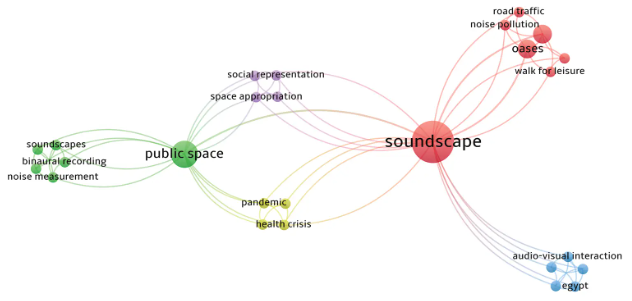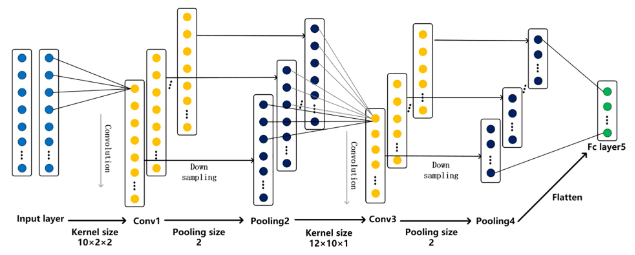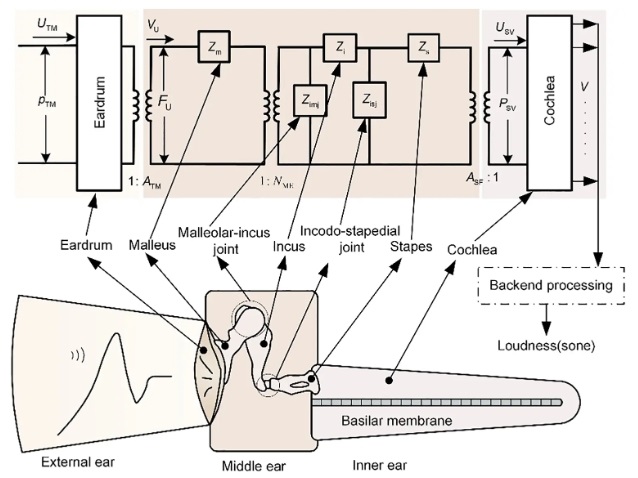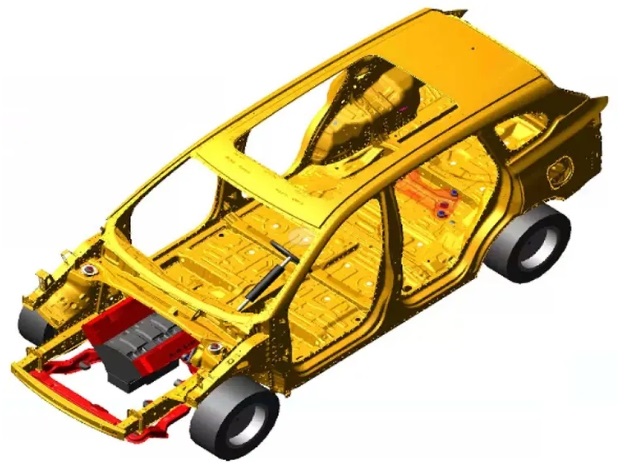Engineering vibration recognition using CWT-ResNet
Abstract
Multi-source signal recognition is a common problem in engineering vibration control. Given that traditional methods often primarily rely on prior knowledge and expertise, which can limit efficiency and accuracy, this study proposed a vibration recognition model based on ResNet, utilizing continuous wavelet transform to combine signal processing with deep learning techniques. The continuous wavelet transform converts the original one-dimensional vibration signals into two-dimensional time-frequency representations with richer feature information, which are then input into the convolutional layers for automatic feature extraction, culminating in vibration recognition through the Softmax layer. To evaluate the model’s performance, 20 sets of measured vibration data were tested. The results show that the proposed model achieves a recognition accuracy of 99%, excelling in both component recognition and the separation of vibration signals. Therefore, this study is of great significance for engineering vibration diagnosis, the front-end design of vibration control, and the analysis and optimization of control effectiveness.
References
[1]Hou R, Xia Y. Review on the new development of vibration-based damage identification for civil engineering structures: 2010–2019. Journal of Sound and Vibration. 2021; 491: 115741. doi: 10.1016/j.jsv.2020.115741
[2]Wang W, Cui D, Ai C, et al. Target-free recognition of cable vibration in complex backgrounds based on computer vision. Mechanical Systems and Signal Processing. 2023; 197: 110392. doi: 10.1016/j.ymssp.2023.110392
[3]Liu D, Cui L, Cheng W. A review on deep learning in planetary gearbox health state recognition: methods, applications, and dataset publication. Measurement Science and Technology. 2023; 35(1): 012002. doi: 10.1088/1361-6501/acf390
[4]Kounta CAKA, Arnaud L, Kamsu-Foguem B, et al. Deep learning for the detection of machining vibration chatter. Advances in Engineering Software. 2023; 180: 103445. doi: 10.1016/j.advengsoft.2023.103445
[5]Łuczak D. Machine Fault Diagnosis through Vibration Analysis: Continuous Wavelet Transform with Complex Morlet Wavelet and Time–Frequency RGB Image Recognition via Convolutional Neural Network. Electronics. 2024; 13(2): 452. doi: 10.3390/electronics13020452
[6]Pinedo-Sánchez LA, Mercado-Ravell DA, Carballo-Monsivais CA. Vibration analysis in bearings for failure prevention using CNN. Journal of the Brazilian Society of Mechanical Sciences and Engineering. 2020; 42(12): 628. doi: 10.1007/s40430-020-02711-w
[7]Nguyen DC, Salamak M, Katunin A, et al. Vibration-based SHM of railway steel arch bridge with orbit-shaped image and wavelet-integrated CNN classification. Engineering Structures. 2024; 315: 118431. doi: 10.1016/j.engstruct.2024.118431
[8]Aldhyani THH, Alkahtani H. Attacks to Automatous Vehicles: A Deep Learning Algorithm for Cybersecurity. Sensors. 2022; 22(1): 360. doi: 10.3390/s22010360
[9]Liu M, Liao S, Yang Y, et al. Tunnel boring machine vibration-based deep learning for the ground identification of working faces. Journal of Rock Mechanics and Geotechnical Engineering. 2021; 13(6): 1340–1357. doi: 10.1016/j.jrmge.2021.09.004
[10]He K, Zhang X, Ren S, et al. Deep Residual Learning for Image Recognition. 2016 IEEE Conference on Computer Vision and Pattern Recognition (CVPR). 2016: 770–778. doi: 10.1109/cvpr.2016.90
[11]Xu W, Fu YL, Zhu D. ResNet and its application to medical image processing: Research progress and challenges. Computer Methods and Programs in Biomedicine. 2023; 240: 107660. doi: 10.1016/j.cmpb.2023.107660
[12]Wen L, Li X, Gao L. A transfer convolutional neural network for fault diagnosis based on ResNet-50. Neural Computing and Applications. 2019; 32(10): 6111–6124. doi: 10.1007/s00521-019-04097-w
[13]Zhang L, Bian Y, Jiang P, et al. A Transfer Residual Neural Network Based on ResNet-50 for Detection of Steel Surface Defects. Applied Sciences. 2023; 13(9): 5260. doi: 10.3390/app13095260
[14]Zhao H, Liu J, Chen H, et al. Intelligent Diagnosis Using Continuous Wavelet Transform and Gauss Convolutional Deep Belief Network. IEEE Transactions on Reliability. 2023; 72(2): 692–702. doi: 10.1109/tr.2022.3180273
[15]Ribeiro AH, Tiels K, Aguirre LA, et al. Beyond exploding and vanishing gradients: analysing RNN training using attractors and smoothness[C]//International conference on artificial intelligence and statistics. PMLR; 2020. pp. 2370–2380.
[16]Liu M, Chen L, Du X, et al. Activated Gradients for Deep Neural Networks. IEEE Transactions on Neural Networks and Learning Systems. 2023; 34(4): 2156–2168. doi: 10.1109/tnnls.2021.3106044
[17]Chen YM, Huang WT, Ho WH, et al. Classification of age-related macular degeneration using convolutional-neural-network-based transfer learning. BMC Bioinformatics. 2021; 22(S5): 1–16. doi: 10.1186/s12859-021-04001-1
[18]Setiawan F, Liu AB, Lin CW. Development of Neuro-Degenerative Diseases’ Gait Classification Algorithm Using Convolutional Neural Network and Wavelet Coherence Spectrogram of Gait Synchronization. IEEE Access. 2022; 10: 38137–38153. doi: 10.1109/access.2022.3158961
[19]Kumar GSC, Kumar RK, Kumar KPV, et al. Deep residual convolutional neural network: an efficient technique for intrusion detection system. Expert Systems with Applications. 2024; 238: 121912. doi: 10.1016/j.eswa.2023.121912
[20]Wang HM, Zhu L. Research on forest pest identification method based on face image quality assessment. Journal of Changchun University of Technology. 2024; 45(1): 53–58.
[21]Zhang W, Zhang M, Jin J Q, et al. Research on status identification of disconnector based on ResNet deep learning network. High Voltage Apparatus. 2024; 60(6): 100–106.
[22]Cai TT, MaR. Theoretical foundations of t-sne for visualizing high-dimensional clustered data. Journal of Machine Learning Research. 2022; 23(301): 1–54.
Copyright (c) 2025 Wei Huang, Jian Xu

This work is licensed under a Creative Commons Attribution 4.0 International License.









